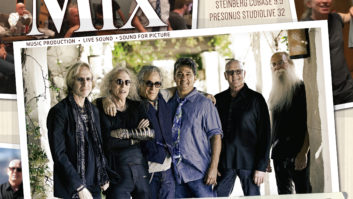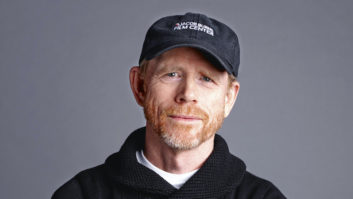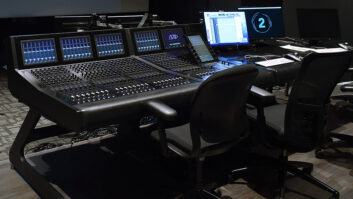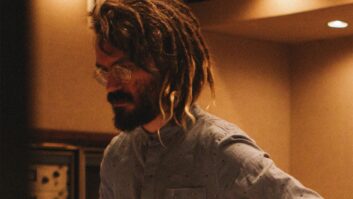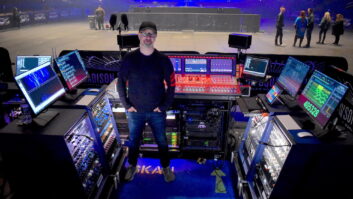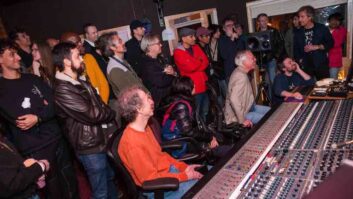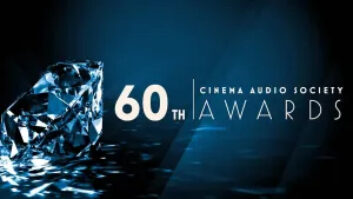Every sprawling property on the street outside Howard Benson’s West Valley Recording Studios is gated. The legendary producer, who is in his fourth decade of hitmaking, is also behind gates in this affluent neighborhood of Los Angeles. Behind the imposing gate and down a long driveway sits a massive house on a half acre of land that could easily belong to a high-powered Hollywood executive. Benson, welcoming and unassuming, leads a tour through this space, whose many hallways are adorned floor-to-ceiling with gold and platinum records he has produced, and it is clear that this live/work space is about the making of music.
Members of the baby band Palisades wave through the glass of the dormitory-style room in which they are temporarily living while writing and recording their debut album with Benson. This is the newest group of young rock ’n’ rollers the multiple Grammy-nominated Benson—including nominations for Producer of the Year in 2007 and 2008—has taken under his production wing. Roaming around the various rooms of the studio are Benson’s longtime engineers, Mike Plotnikoff and Hatch, each pedigreed in their own right.
“If you don’t want to have hits, don’t hire me,” is what Benson tells artists who come to work with him. “As a producer, it’s not up to you to make the artists artistic. They better be pretty artistic already. They got signed because they’re artistic. As a producer, it’s up to you to deliver to the record label something they can make money off of so the artist can make money. Believe me, if you make money, you will be sitting in that producer’s chair next time.”
With the 150-plus albums he’s produced and the 40 million–plus records sold, Benson can retire any time he chooses. But just being around him, it’s clear that he loves his job and is nowhere near done. Working as a producer since 1985, he has adapted to the evolution of the music industry, but he hasn’t changed. His touch worked just as well for the glam hair metal of Bang Tango in 1989 as it did for the balls-out rock ’n’ roll of Motörhead in 1993, the ska punk of Less Than Jake in 1998, the dark theatrics of My Chemical Romance in 2004, the rock/pop crossover of American Idol finalist Daughtry in 2006, the all-appealing pop of Kelly Clarkson in 2009, and the Christian nu-metal of P.O.D. in 2015.
Benson is not a genre purist; neither is he the kind of producer who stamps his sound onto every artist with whom he is working. There are, however, certain Howard Benson markers. He is one of the first, if not the first rock producer to introduce computers into the recording area. He employed MIDI from 1985 using Hybrid Arts’ no-memory product on an Atari 1040. He went on to two-track digital recording made by Turtle Beach for IBM. And he has been a proponent of Pro Tools since the pre-Avid Digidesign Sound Designer days.
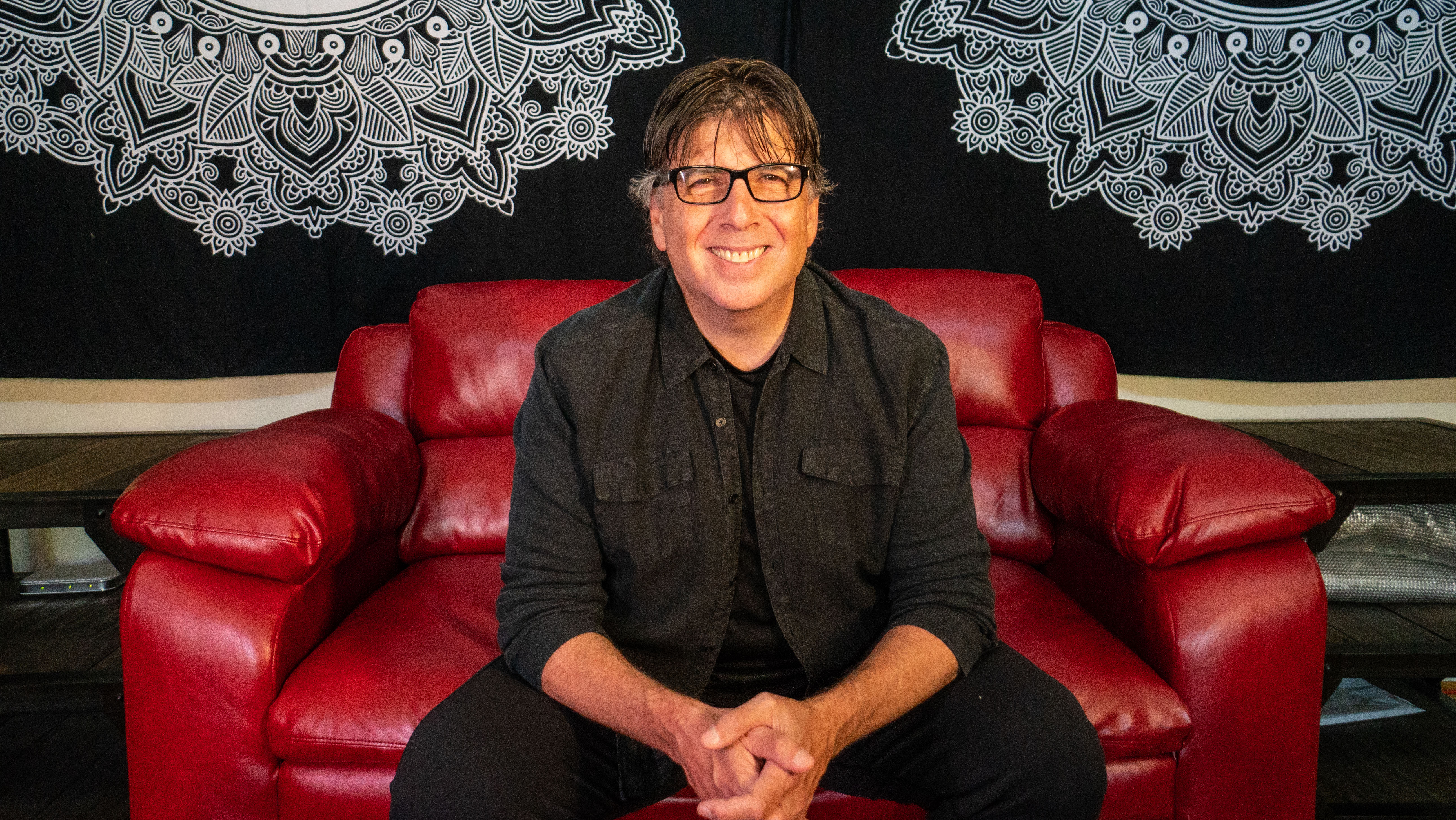
The digital realm has always had a defined space in Benson’s production style. His degree, from Philadelphia’s Drexel University, also his hometown, is in materials engineering, and he worked in aerospace prior to making the move to the recording studio. He credits his affinity for the technical to this educational background and has a home studio, Sparky Dark Studios, where he takes what’s captured at West Valley and delves into the VST and plug-in world.
“Miking amps and miking drums is such an art form,” says Benson. “[Plotnikoff] is the best in town at that, which means I don’t have to worry about it. It frees me up to think creatively. I was way out in the cosmos in the computer—back when no one was using it, and my recordings started sounding like nobody else’s records because they didn’t know this stuff even existed. When Auto-Tune first came out on a disc for Atari, I put a vocal through it and out the other end came a tuned voice. I shaved three weeks off my project, which means I can spend more time on effects, rearranging songs, redoing drums. It was almost like getting a second brain.”
Howard Benson: Grammy-Nominated Producer Turns Tracks Into Gold, by Sarah Benzuly, Feb. 1, 2007
For all of Benson’s kinship with the digital world, his recordings sound pure analog, but at their punchy and perfected best. STL Tones offers the Howard Benson Bundle: Kemper Edition, which has the dial settings for the guitar tones of some of his most popular albums, as well as some of his unique combinations. The result of a six-month project that is still in process, Benson and Plotnikoff have culled through at least 15 years of hit records to pull some of the signature tones—which has proved a great exercise, as they are resurrecting some of the classic ones in current projects.
To retain the real sound aesthetic, another Benson marker is steering away from EQing during recording and from too many plug-ins after the fact. Vocals, for example, are more often than not sung through a Sony C800, but for the younger singers who like to scream and shout, the Shure SM7B is used. Instead of EQing the vocals, Hatch adjusts the volume as the song is being recorded in order to keep an arc in the performance.
“We focus more on the music than the plug-ins,” Benson says. “It’s always mic, preamp, compressor, computer. We don’t EQ guitars—we move the mic. Everything points toward the song, and for me, the lyrics. Whatever we use is about the emotion. We’re not selling plug-ins. We’re not selling the computer. We’re not selling the desk. We’re selling feelings. When we do use plug-ins, they really mean something.
“But then I hear a really cool Drake song and it’s done completely in the computer, and what a masterful job the arrangement is,” he continues. “So many of those arrangements are fantastic and way better than I can get out of some of the artists here. We’re working in an almost two-dimensional space: two guitars, bass, drums and whatever sweetening we put on it. These pop guys are working with whatever they want to work with, and it’s so much harder for them. They have to score every time. I respect those guys because I know how much work they are putting in. That has to be brutal. Plus the fact that their egos are getting bruised every day. They’re doing all this work and the label goes, ‘Nah, don’t like it, we’re going to give it to this other person,’ and you just did all this work for free. That’s got to be tough.”
Curing the Summertime Blues: On Tour and Off, Strategies for Beating the SR Slump, by Blair Jackson, Jan. 1, 2005
While pop music has its limited shelf life at this point in time, as do its creators, Benson is enjoying the longevity that comes with the loyalty of rock music fans, both professionally and financially. A businessman as much as he is a musicman, Benson has his affairs in order with everything from Sound Exchange, BMI, ASCAP, AFM, AFTRA set up, as well as his dealings with Spotify and the big three (Sony Music Entertainment, Warner Music Group and Universal Music Group) all online.
“In the ’80s we would write one good song and sell 12 of them,” he says. “I was making 10 albums a year because of Pro Tools. Now, because artists have to put out so much material, you have to produce more material. What passes for a hit now is really hard to say. We don’t measure in terms of record sales; we measure in terms of the brand getting bigger. Labels aren’t giving us half a million dollars for a recording anymore, they’re giving us 10 percent of that, so it’s up to me to bring the recording budgets down. Hiring the right guys and doing a lot of projects and having somewhere the bands can live and keeping to time limits, the labels are fine with us.”
Benson has interns on his team, more often than not from his old alma mater, where he is now a lecturer teaching a production master class via Skype. These interns are part the co-op program at Drexel’s music school, which puts students into jobs in the industry the summer after their sophomore year. Drexel and NYU are the two options Benson considers superior for music education.
Music: My Chemical Romance, by Blair Jackson, Jan. 1, 2011
“We get students from other schools. They don’t know what they’re doing,” he says. “They’re not taught how to be in a studio. They can’t even get lunch properly—and that’s my test: getting a lunch order right for five guys in a band.
“Education worked for me,” he concludes. “Five years of engineering gave me the ability to think logically and put pieces together and not be flustered by fire drills that happen every day. All these are part of being a decent producer. A lot of guys don’t handle that stuff well. They yell and scream. But like anything else, the education has got to be a good education. I didn’t really learn how to produce until I met Keith Olsen, and that was a big deal for me. If you’re not going to get an education, get with a producer early on and learn from them.”
Want more stories like this? Subscribe to our newsletter and get it delivered right to your inbox.
